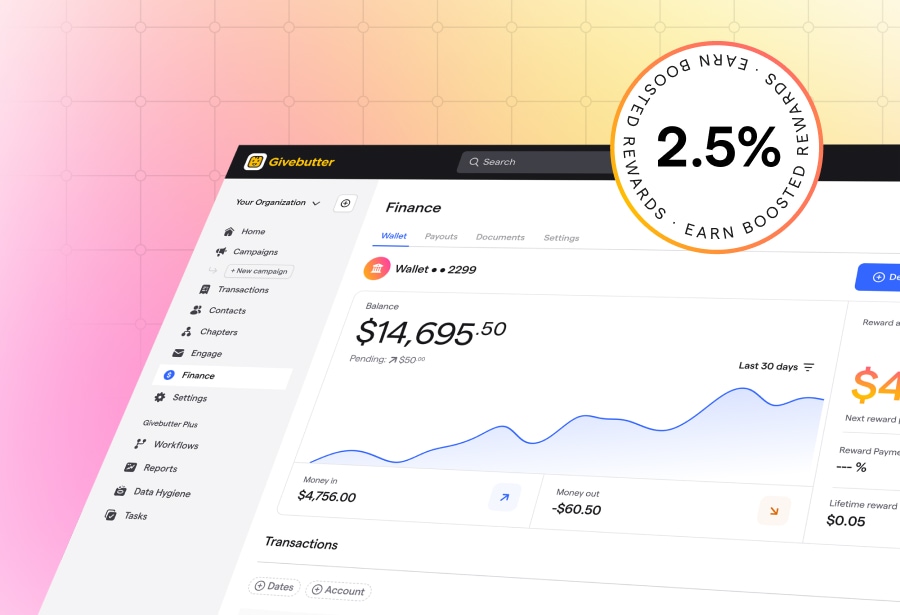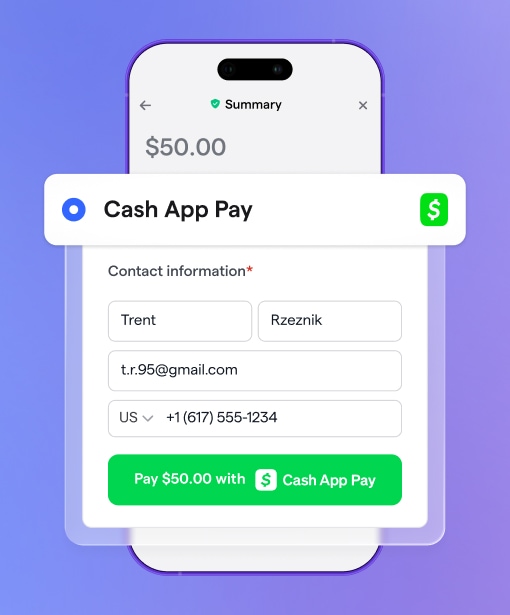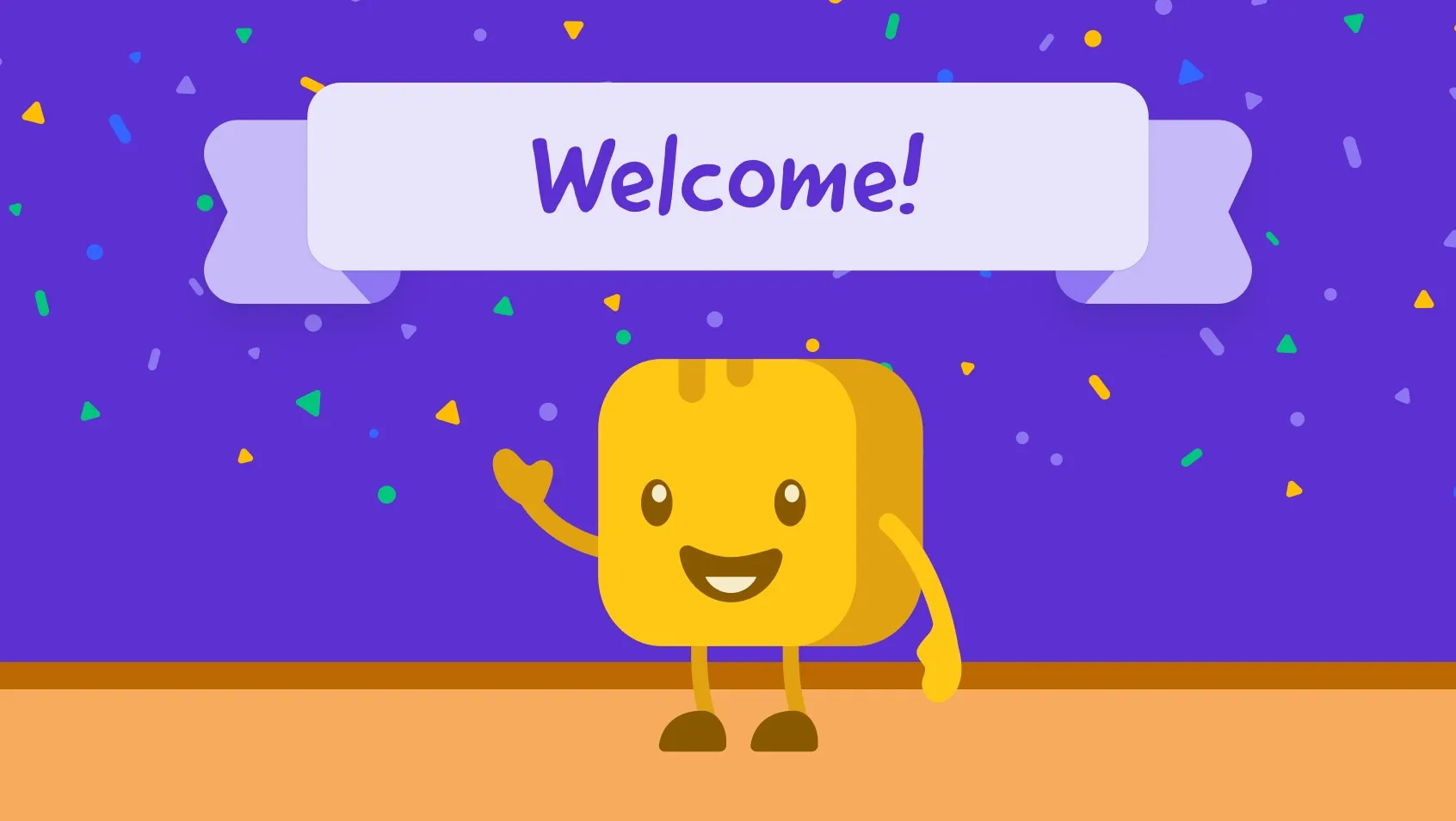Table of contents
Table of contents
Imagine moving to a new city and looking to make friends. Where would you start? Maybe you’d reach out to friends of friends or join a club. Next, you might invite an acquaintance to get coffee, followed by dinner. Dinner turns into regular hangouts, and two years later, that new friend is in your wedding party. Success!
For nonprofits, finding and keeping donors can feel a lot like making good friends in a new city—that is to say, difficult! Fortunately, moves management is a strategy that helps move prospects seamlessly from awareness to advocacy.
Completing the moves management cycle takes time. After all, it’s unlikely you’d leapfrog from casual acquaintance to wedding-party privileges. But with the right steps and tools, you can cultivate a strong support base and secure those all-important high-ticket donors.
What is moves management?
Moves management is a strategic five-step process nonprofits use to identify and guide donors to higher levels of giving. In other words, it’s how you turn first-time supporters into lifelong champions for your cause!
You can think of "moves" as steps on a donor engagement ladder—you need to set these up for your donors to climb. "Management" refers to how you nurture these relationships and guide your supporters through each step.
Why is the moves management process so important?
On average, recurring donors give 42% more annually compared to one-time donors. With a strong moves management process, you’re better equipped to transition your supporters from general awareness to loyal investment in your mission.
Every supporter discovers your mission somehow—even those who stumble on it “by chance,” perhaps through an article, Facebook post, or event they attended as a plus-one. Moves management is the strategic process of building lasting support from these connections.
The 5 stages of the moves management cycle
1. Awareness: Make your mark 💥
The awareness stage is all about expanding your reach to attract new supporters. To make this happen, you’ll need to craft compelling, eye-catching narratives about your nonprofit’s history, mission, and impact.
💃 Moves
- Host engaging events: Dedicate staff or volunteers at each event to seek out and welcome newcomers. Set up an information table and initiate casual, friendly conversations.
- Tell your story: Share emotionally compelling details about your organization and impact through one-on-one interactions like phone calls, social media, formal remarks at events, and mailings.
- Leverage existing relationships: Let current supporters know you’re looking to grow your organization and encourage them to share social media posts and information. If you’re seeking large donations, let your board know—they likely have a network of major donor prospects. This non-monetary ask is also a great way to strengthen existing donor relations.
🧰 Tools
- Social media: Get creative with social media messaging by curating eye-catching posts featuring photos and bold, colorful graphics. Include direct quotes from those impacted by your organization. Consider paid advertising to give your posts an extra boost.
- Email: Scale your awareness with a thoughtful email automation strategy. Add an email signup form to your website or donation page that automatically sends subscribers a welcome email series. This is one of the quickest and easiest ways to scale up your mission.
🧮 Metrics
If you’re looking to expand awareness, set specific goals for signups and registrations. At this stage, carefully monitor your social media engagement metrics. Don’t worry too much about donations yet—those will come later.
💪 Bottom line
The awareness stage is a critical starting point for attracting supporters, regardless of your size or fundraising goals. With the right tools and strategies, you can streamline the process without watering it down.
2. Identification: Understand your donors 🕵️♀️
The goal of identification is to take stock of your donor base and determine who should be prioritized for engagement. This is essential to ensure you invest time and effort on the right prospects during the next cultivation phase.
💃 Moves
- Audit your current donor list: Use donor segments to tailor your moves management cycle to a specific subset of donors.
- Make your new donor wishlist: Review your donors’ giving history, financial capacity, and interests. From here, identify who is most likely to become a recurring donor based on their demographics.
🧰 Tools
- CRM: With a donor management CRM, you can segment and filter your list based on various criteria, track individual gifts, and log donor interactions like emails, text messages, event registration, or volunteer history.
- Wealth screening tools: Use sites like Wealth Engine to help you dig deeper. These tools can even connect to your CRM, such as Givebutter's DonorSearch integration.
- Search engines: Don't be afraid to do a little sleuthing. Google, Zillow, or even good old-fashioned white pages can provide insights into your donors.
🧮 Metrics
The identification stage is all about setting fundraising goals. A donor pyramid can help you visualize how many people you need to reach, and at what level.
💪 Bottom line
Donor prospecting isn't just for well-connected nonprofits or high-ticket fundraising. Once you take stock of your achievements and support base, you’ll be in a strong position to create an action plan for reaching your goals.
3. Cultivation: Create multiple touch points 👈
Cultivation is the process of keeping your donors invested in your mission and strengthening connections. With the help of your team, plan your donor communications calendar to determine how you’ll connect with donors throughout the year. Designate specific tasks to team members to keep responsibilities clear.
💃 Moves
- Give individual attention: Meaningful, relationship-building touchpoints go a long way in the donor cultivation cycle. This is an essential step for soliciting large donations.
- Schedule a one-on-one coffee chat, either in person or via video chat.
- Forward them an article that may be of interest.
- Personally invite them to a fundraising event.
- Make non-monetary asks: Not all requests should be for donations. In fact, it’s good practice to connect with your donors without asking for money. Otherwise, you risk causing donor fatigue, which can lead to a drop in your donor retention rate.
- Request their feedback or ask them to complete a survey.
- Invite them to volunteer at your next event.
- Personalize your mass communication: Speak directly to donors using custom merge fields to include their name, contribution amount, and other key details.
🧰 Tools
- CRM: Let your moves management CRM do the heavy lifting. With Givebutter, you can send free personalized and targeted text and video messages and even track attendance and volunteer roles at events.
🧮 Metrics
With conversion tracking, you can get as granular as you want with your data—even down to which emails were opened and which links were clicked.
💪 Bottom line
This stage is when you really have to pound the pavement, folks. Donor cultivation must be genuine—prospective donors will sense insincere efforts to connect right away. The good news is, you have something in common with all your supporters: your mission. Focus on that common goal, and you won’t go far wrong.
4. Solicitation: Make the ask 💰
Finally! After all the work you’ve put into spreading the word about your mission and cultivating your support base, it's time to make THE ask.
💃 Moves
- Specify what you're asking for: Donation asks can take many forms, including:
- Setting up a recurring donation during your end-of-year fundraising drive.
- Committing to anchor a team for your charity 5K run.
- Sponsoring a local golf tournament to benefit your organization.
- Buying a table at your annual gala.
- Determine how you’ll ask: If you’re making a major gift request from a VIP donor, do it in person—at the very least, over the phone or video chat. For smaller donations, an email, SMS, or social media post will do the trick. No matter the amount, we have some great tips for how to make your ask with confidence.
🧰 Tools
- Payment processor: Attract more donations by accepting Cash App, Venmo, Google Pay, Apple Pay, and text-to-donate. Set up donor forms to accept multiple payment methods.
- Ticketed events: Send regular reminders to prospective donors leading up to the big day.
- SMS: Combine personalized texting with a peer-to-peer campaign to encourage existing donors to make the ask on behalf of your organization.
🧮 Metrics
Track donations in real time! Fundraising platforms like Givebutter allow you to download your giving data to measure your success over time. And don’t forget to share your results publicly—a fundraising thermometer can be an exciting way to showcase progress and inspire more people to donate.
💪 Bottom line
For many nonprofits, this is the most intimidating moves management phase—especially if you’re making a one-on-one ask for a major gift. But remember, the worst thing someone can say is “No.” And if they do, don’t worry. There’s bound to be a “Yes” around the corner.
5. Stewardship: Show the love 💕
Donor stewardship refers to the steps you take to nurture personal relationships with your donors after they contribute to your nonprofit. Keep gratitude at the core of your nonprofit fundraising strategy with these moves and tools.
💃 Moves
- Say thank you: Be sure to thank every one of your donors. Use workflow tools to send automated emails after an online donation, handwritten notes, texts, video messages, or social media shoutouts. If possible, choose at least two ways to thank each donor.
🧰 Tools
- Automated receipts: Automated receipts aren’t a replacement for a proper thank you, but they're a great tool for acknowledging a donation immediately.
- Automated text blasts: You can quickly thank supporters via SMS with personalized, outbound texts. Don't forget to liven things up with a GIF or link to a campaign video.
- Personalized thank yous: Givebutter's ThankView integration makes it easy to create personalized thank-you videos at scale, so you can deliver heartfelt appreciation to your supporters.
🧮 Metrics
You've reached the final stage of the moves management cycle. Now it's time to evaluate your progress and determine which parts of your process you’ll refine in the next cycle.
💪 Bottom line
Thanking and acknowledging your donors isn't just a kind thing to do—it drives donor retention. Guidestar reports that donors who receive a thank-you note within 48 hours of donating are four times more likely to make a second contribution.
And repeat 🔄
You've made it through each stage of the moves management cycle, and now you're back at the beginning—congrats! 🎉
This time around, you have even more supporters on your team, whether they've given for the first time or moved toward recurring donations (or maybe even board positions!). Adjust your awareness strategy and determine how you’ll cultivate these relationships in the next cycle.
Download free moves management template
Organize your moves management strategy around the five core stages of the donor journey shown below. You may find it helpful to visualize this process as a ladder, funnel, or bullseye—with awareness on the outer circle and solicitation and stewardship at the center.
Use the template below to help you visualize each stage of the moves management cycle, including steps, tools, and metrics.
The 3 best moves management systems
Moves management can be complex. The process involves multiple steps and a whole lot of metrics and data. Organizing that information to effectively attract and retain donors can be tricky. But not to fear—that’s where move management software comes in.
The best moves management software options include:
- Givebutter 💛 A versatile all-in-one fundraising and donor management solution. With modern donation forms, peer-to-peer fundraising, built-in marketing and engagement tools, and event management tools—combined with a powerful CRM—Givebutter makes moves management smooth as butter.
- Salesforce Nonprofit Cloud ☁️ A robust CRM tailored for larger nonprofits with complex management needs, including customizable dashboards, automated workflows, and advanced donor tracking.
- Neon One 📘 A great option for nonprofits looking to expand their CRM operations. It offers features like donor segmentation, engagement tracking, and personalized communication.
Moves management and beyond
Want to take your donor relationships to the next level? Check out these helpful resources!
- Donor Cultivation: What It Is & 5 Key Strategies
- Donor Retention Guide: How To Calculate & Improve
- Launch A Donor Prospecting Campaign In 6 Steps
- Donor Database Software for Nonprofits Expert Guide
- 6 best donor engagement software to boost retention
- Donors ghosting you? Win them back with Givebutter Plus
Elevate your moves management with Givebutter
With effective moves management, you can transform supporters not only into donors, but true champions of your organization. Using a donor-centered approach and a comprehensive fundraising platform that makes giving easy, you can focus on what really matters—changing the world.

Donor management made easy
Givebutter is a completely free, all-in-one fundraising platform that has helped nonprofits raise more than $300M. Ready to see how Givebutter can set you up for success in every stage of your moves management cycle? Sign up for your free account today.
Let's make moves together for a butter world. 💛
Moves management FAQs
What is a moves management strategy?
A moves management strategy is a process nonprofits use to guide supporters from awareness to ongoing donors and advocates. By applying a research-based and data-driven approach, nonprofits can cultivate long-term relationships and boost donor retention.
What is the difference between moves management and the donor cycle?
Both moves management and the donor cycle follow the same general steps, but moves management is more detailed. It includes additional methods and tools to help organizations effectively move supporters through each phase of the cycle.
What is the meaning of move management?
Moves management fundraising refers to the five stages nonprofits use to lead donors through their journey from initial awareness to becoming recurring donors.
What are the stages of move management?
The five stages of moves management are awareness, identification, cultivation, solicitation, and stewardship.
.svg)


.png)



%20(1).png)


















